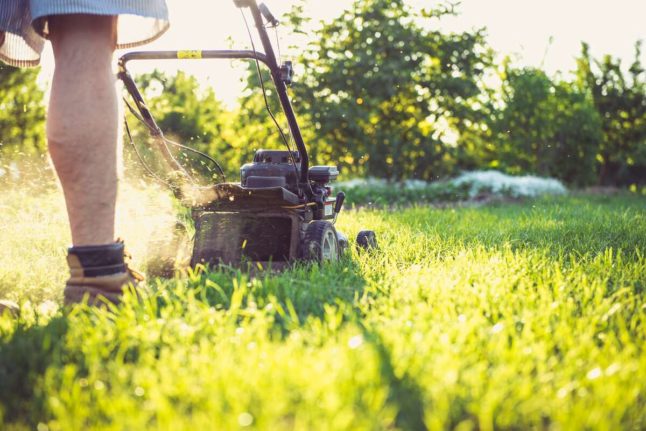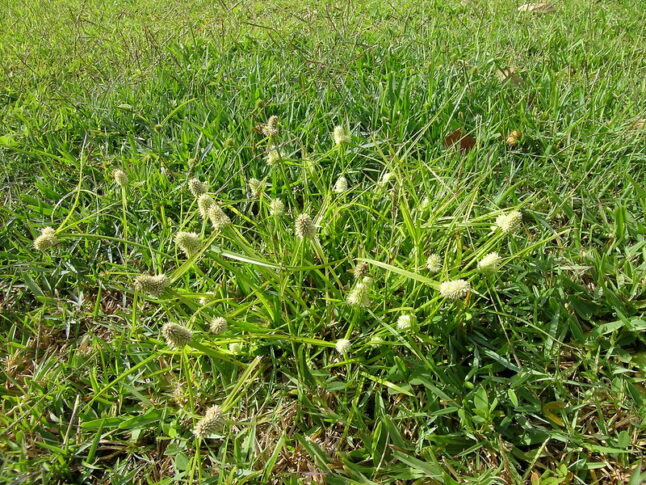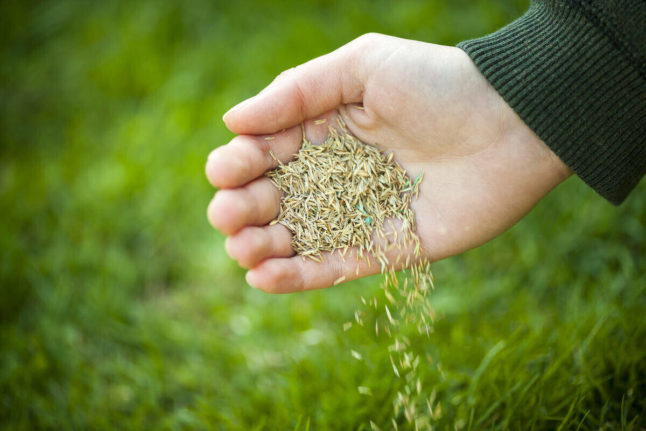
“Tennessee—America at Its Best.” It’s not just an advertising slogan, but a fact. From lush green valleys to rolling hills and majestic mountain ranges, Tennessee truly has it all. And with these lawn care tips for Tennessee, your lawn can be its best, too.
With its diverse and unique terrain, Tennessee requires special consideration when it comes to lawn care. Let’s take a look at some of Tennessee’s unique challenges and see which lawn care tips can help you take your grass to the next level.
In this Tennessee lawn care guide:
- Lawn Care Tips for Tennessee by Region
- East Tennessee Lawn Care Tips
- Middle Tennessee Lawn Care Tips
- West Tennessee Lawn Care Tips
- FAQ
Lawn Care Tips for Tennessee by Region
Tennessee isn’t just the land of music and the Grand Ole Opry—it’s also a state with diverse topography. That’s why we need the three Grand Divisions – East, Middle, and West Tennessee.
From the Appalachians and the Blue Ridge Mountains in the east to the Upland South, Deep South, and the level plains of West Tennessee, different terrain means different lawn care needs. That’s why it’s important to tailor your lawn care strategies to your specific region. No matter where you are in the Volunteer State, we’ve got you covered.
But before you get into these lawn care tips, make sure you’re working with the best grass type for your needs by checking out our statewide guide to the best grass seed for Tennessee.
East Tennessee Lawn Care Tips
East Tennessee is home to the iconic Great Smoky Mountains and the Cumberland Plateau, along with plenty of quaint valleys and rolling hills. Knoxville, Chattanooga, and the Tri-Cities have plenty of lush natural beauty to offer.
What’s the best way to take advantage of this blessed land? Start with these lawn care tips for East Tennessee:
1. Rake Up Yard Debris

The Great Smoky Mountains National Park doesn’t just bring tourists to East Tennessee—it also brings strong winds and potential snowstorms. While this makes for some beautiful photos, it also means plenty of debris and fallen branches that can pile up in your yard.
Before you go on your next big Smokies adventure, make sure to give your backyard a thorough rake-up and remove dead plants, leaves, sticks, and anything else that’s been left behind. Debris like these can cause serious trouble for your lawn – they block sunlight and water flow, and they also invite pests and lawn diseases.
2. Fertilize and Dethatch If Needed

If your lawn is struggling to grow as thick and green as you want it to, it could be a sign that you need to fertilize or dethatch, depending on the season. Both cool-season and warm-season grass types grow in East Tennessee, and the lawn care schedule for each type is different.
Since warm-season grasses (i.e. Bermudagrass, Zoysiagrass) should be planted between March and July, mid-April is a good time to fertilize. Dethatching for warm-season grasses should be done when the turf is strongest and healthiest, in late spring or early summer.
For cool-season grass types (i.e. tall fescue, fine fescues, perennial ryegrass, Kentucky bluegrass), the best time to fertilize is between September and mid-October, which is also a good time to dethatch. We recommend dethatching before fertilizing so the fertilizer has an easier time reaching the soil.
3. Get Your Soil Tested

Just like humans need vitamins and minerals, lawns need nutrients in their soil. Before you fertilize or begin any other lawn care strategies, get your soil tested to check acidity and nutrient levels—and make sure there aren’t any pesky pests lurking beneath the surface.
You can either conduct an at-home test with a soil test kit or send a sample to the University of Tennessee’s Soil, Plant, and Pest Center for a more detailed analysis and recommendations for fertilizers and soil amendments. To make the process easy, follow our guide on How to Prepare a Soil Sample.
4. Overseed Your Lawn

Overseeding means adding more grass seed to your existing lawn to help it grow thicker and outcompete weeds. With the right combination of grass seed, sunshine, and water, overseeding can turn a once-thin lawn into a lush, green masterpiece.
A warm-season grass lawn overseeded with cool-season perennial ryegrass is a common combination here in East Tennessee. This combination of warm-season and cool-season grasses helps lawns in the transition zone – which includes all of Tennessee – stay green year-round.
5. Pest and Disease Control

Strong winds, humidity, and warm temperatures in East Tennessee create a haven for lawn pests and diseases. Before they take over your backyard paradise, know which products to use to eliminate these problems.
For insect pests, instead of a catch-all pesticide, it’s best to use one that is designed to target your particular pest problem. That way, you won’t harm beneficial insects such as bees and butterflies. Plus, catch-all solutions may not be effective against the pest you’re battling.
For lawn diseases like brown patch, snow mold, and dollar spot, it’s important to stay one step ahead. Look out for early symptoms such as browning or thinning patches of grass. Apply a fungicide with triadimefon, myclobutanil, PCNB, maneb, thiophanate-methyl, or propiconazole ASAP once you notice these symptoms.
Middle Tennessee Lawn Care Tips
Next, we’ll make our way to the heart of the Volunteer State: Middle Tennessee. Home to Nashville, beautiful rolling hills, and lush stream valleys, this region has lots of lovely sights for your lawn to compete with.
Here are our top lawn care tips for Middle TN:
1. Water Consistently and Efficiently

Whether you’re in East or Middle Tennessee, one lawn care truth remains unchanged: if your yard isn’t getting enough water, it won’t look its best. But the challenge with watering the lawn in Middle TN is finding the balance between lush and overwatered—as it’s easy to overdo it during the hot, humid summer.
That’s why we recommend a smart sprinkler system with an automatic timer and moisture sensors. Scheduling your irrigation, along with accurate soil moisture readings, can ensure that your lawn gets enough water without getting too much.
Also, make sure to water well before 10 a.m.—otherwise, the heat of midday will cause the water to evaporate before it has time to soak into the soil.
2. Aerating Your Lawn

Thanks to its rolling hills and steep elevation changes, some areas in Middle Tennessee have quite rocky soils. To ensure your soil is getting the oxygen it needs and your grass’s roots have space to grow, lawn aeration is essential every autumn—especially on sloped yards where soil compaction is more likely to occur.
You can opt for core aeration (in which plugs are pulled from the soil) or spike aeration (in which small holes are punched into the ground). Core aeration creates more space in compacted soil, so it’s generally the better option, but spike aeration is easier to DIY.
3. Mow Appropriately and Leave Clippings Behind

Nashville, along with the rest of Middle Tennessee, gets plenty of heat during summer, which is why mowing your lawn at the right height is essential. If you mow the lawn too short, you can stress the grass, making it more vulnerable to drought and heat damage.
The best mowing height for your lawn depends on the type of grass you have. Here are the recommended mowing heights for the best grass types for Middle Tennessee:
- Bermudagrass — 0.5 to 1.5 inches for hybrids, 1.5 to 2.5 inches for common Bermuda
- Kentucky bluegrass — 2.5 to 3.5 inches
- Perennial ryegrass — 1.5 to 2.5 inches
- Tall fescue — 2 to 3 inches
- Zoysiagrass — 1 to 2 inches
After mowing, leave your grass clippings behind instead of bagging them! Not only does this gently fertilize the soil, but it also helps the soil retain moisture, which is essential during hot summers.
4. Mulch and Prune

Middle Tennessee homeowners also need to make sure they’re prepared for the changing seasons. One way to do this is by mulching your plants and shrubs in spring and/or autumn.
Mulch insulates the soil and helps it retain moisture, which is helpful during the extreme temperatures of summer and winter. A healthy layer of mulch also suppresses weeds.
Pruning your trees and shrubs at the right time of year is also essential for Middle Tennessee landscape care. The best time to prune trees and shrubs is when they’re dormant, which for most plants is winter – approximately November through March.
5. Pest Control

Middle Tennessee’s climate diversity means there’s a good chance your lawn and garden could face pests such as cicadas, leaf miners, aphids, spider mites, Japanese beetles, or bagworms.
To combat them (in an eco-friendly way) take preventative measures like introducing beneficial insects into your garden. Ladybugs and praying mantises can be the perfect natural pest control agents. Birds are also helpful in controlling many insect pests, so it’s not a bad idea to add a birdfeeder or birdbath to your property.
West Tennessee Lawn Care Tips
Last but not least, let’s cross the Mississippi and take a look at some of the unique lawn care challenges in West Tennessee.
As part of the Gulf Coastal Plain physiographic region, West Tennessee is characterized by relatively flat terrain—which makes tending your lawn that much easier, since you don’t have to worry about mowing on a hill or anticipating the crazy weather that comes with elevation.
Here are some of the top lawn care tips for those living west of Memphis:
1. Be Careful With Watering

Water is key to any grass’s success—but thanks to the Gulf of Mexico, West Tennessee sees some heavy precipitation throughout the year, so you don’t have to worry too much about watering, as long as your soil holds moisture well.
As a rule of thumb, you should be aiming for about 1 to 1½ inches of water per week, including natural rainfall. Don’t water the lawn if it’s just rained or if rain is forecasted in the next few days.
West Tennessee’s average annual precipitation comes in at around 50 inches per year, which could be plenty for your lawn. To avoid overwatering, wait to water your lawn manually until you notice signs of drought stress, such as:
- Grass color fading
- Grass blades curling inward
- Footprints staying on the lawn after you walk across it
2. Fertilize with Nitrogen

Your lawn needs plenty of nitrogen if you want it to look its best and greenest. However, fertilizing at the wrong time of year can hurt your grass more than help it. For example, if you add nitrogen fertilizer in the middle of a scorching West Tennessee summer, you’re likely to burn the grass.
Cool-season grasses should get their first application of fertilizer in early September and then again in mid-October and mid-November. As for warm-season grasses like Zoysia or Bermuda, they should be fertilized in late spring, before the peak of summer heat.
3. Weed Control

Weeds can be a pain, and West Tennessee’s warm summer temperatures are a prime breeding ground for these pesky visitors. The key to weed control is preparation—the more you knock them down before they even have time to grow, the better.
To avoid weeds altogether, apply a pre-emergent herbicide once in spring to prevent summer weeds and once in fall to prevent winter weeds.
4. Protect Evergreens from Snow Damage

What’s winter in West Tennessee without snow? It can be magical, just as long as you know how to care for your trees.
To protect your evergreens, laurels, rhododendrons, boxwoods, and camellias from snow and freeze damage, cover them with sheets, towels, blankets, tarps, or other barriers before the first frost. Western TN’s first frost dates are usually between mid-October and mid-November.
Also, try tying loose branches together with sturdy rope or twine in case of heavy snow accumulation. Just make sure not to go poking around at the branches with a snow shovel or broom—even lightly. Winter cold can make them brittle, and even the gentlest of snow removal attempts could cause damage.
5. Seed in Late Summer/Early Fall or Early Spring

Most of West Tennessee has a humid subtropical climate with distinct summers and mild winters. This means that if you decide to seed your lawn as part of your plan for turf perfection, your best bet is to seed in late summer or early fall for cool-season grasses and early spring for warm-season grasses.
Planting in late summer or early fall gives cool-season grasses plenty of time to develop a robust root system before the winter cold sets in. Warm-season grasses, on the other hand, need time to establish roots before the harshest heat of summer.
FAQ About Tennessee Lawn Care
The ideal time to plant grass in Tennessee depends on the type of grass. Cool-season turfgrasses, such as fescues, Kentucky bluegrass, and perennial ryegrass should be planted between late August to mid-October.
Plant warm-season grasses, such as Bermudagrass and Zoysiagrass, between May 1 and June 30.
Tennessee is home to a variety of turf-type grasses, but the most popular is tall fescue. Thanks to its coarse leaves and increased drought tolerance, this grass has become the go-to for many Tennessee homeowners looking for a lush lawn.
Brown patch is a common lawn fungus in Tennessee. It’s caused by over-watering, over-fertilizing, or mowing the grass too short. To prevent brown patch, keep your watering and fertilizer schedule consistent, and never mow your grass too short.
Planting grass in the winter is not recommended because most grasses grow best when the temperature is between 65 and 75 degrees Fahrenheit.
The Perfect Lawn Oasis in Tennessee
The Great Smokies and the Gulf Coastal Plain, rolling hills and level plains—Tennessee has it all. But no matter where you call home in this great state, the right lawn care tips can turn your landscape into a beautiful oasis. LawnStarter can help make your dream lawn a reality by connecting you with local lawn professionals to give your grass the care it needs to stay healthy, green, and vibrant. Whether you live in Nashville, Memphis, Knoxville, or Chattanooga, your perfect lawn is just a click away.
Photo Credit: LaFollette House / Brian Stansberry / Wikimedia Commons / CC BY 3.0